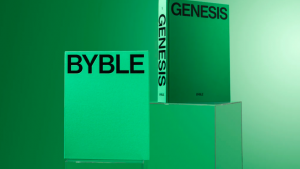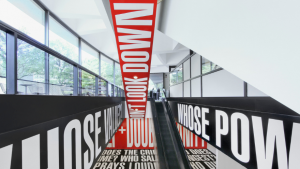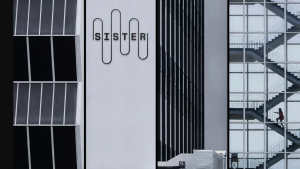The vibrant dialogue between Africa and electronic music is only getting more exciting, especially now that the likes of Richard Mthetwa (Nozinja) and his “Shangaan electro” have entered the mix. Hailing from Limpopo, where the Shangaan dialect of the Tsonga language is dominant, Mthetwa is praised as the father of the manically fast-paced genre of music.
Shangaan electro originated in South Africa’s bustling townships. It is the music of everyday – in the minibus taxi’s, the shops, cafes, townships, and of course on the dance floor. But Shangaan electro and Nozinja are growing beyond South Africa’s borders. Nozinja has released his debut album “Nozinja Lodge” on UK label, Warp Records and has recently headlined Electronic Africa, a concert held by the Red Bull Academy in New York City.
The bold album artwork of "Nozinja Lodge", designed by the team at Oval-X draws on Shangaan culture and African folk-art, combining acid-bright colours with graphic patterns and bold-floral prints. And while the sound of Shangaan electro is ruthlessly, breathlessly and ridiculously fast, the effect of so much speed on the cover art is paradoxically to make everything seem psychedelically slow.
Designing the album art for this infectious genre of music is no mean feat, so we spoke to Oval-X, the Los Angeles-based creative duo behind the album art about creating visuals for such dizzying audio.
Tell us how you came into contact with Nozinja?
A representative at Warp Records along with Nozinja’s manager contacted us.
What was the brief? Tell us about it?
We were give a few initial guiding notes. We were told the album was named "Nozinja Lodge" in reference to Nozinja Hotel in Limpopo and that the hotel could possibly represent a transformative space where Shangaan electro happens not unlike the kind of supernatural world of David Lynch's Great Northern Hotel from the television series Twin Peaks.
What are the influences behind the album cover?
Dirt bikes, photographs by Leonce Raphael Agbodjelou as well as Jan Hoek, the artwork of David Lieske, vintage roadside motel signage in America, Laurence Hamburger's Frozen Chicken Train Wreck, CoolPlacesSoundSystem, the aesthetic of lo-fi DIY mix tapes from Africa, and Nozinja's own tailored garments with traditional patterns amped up a bit
Describe the aesthetic of the album cover.
Gumbo and the assembled souvenirs from the Shangaan. The combination of high brow/low brow, east/west/north/south, world/other-world, and folk art simmered in 190 beats per minute (bpm) time-travel brochures.
What do you think of Nozinja and about Shangaan electro?
We want to put on those flashy skirts (Xcibelani) and learn the dances!
What other projects are you working on? Anything with any other South Africans?
We have another album cover project in the pipeline for Warp Records slated for a fall release. Unfortunately not with a South African artist this time but we would love to work with other artists from there regardless of their discipline; musicians, artists, writers, filmmakers.
Is album cover art something that the Oval-X team has been interested in?
Yes. No doubt about it. Totally. It is often the most radical commercial art that reaches people. There are many inspiring predecessors that push us to make the most compelling artwork we can; Vaughan Oliver, the late Storm Thorgerson, Peter Saville, to name a few.
How did the music affect the final design? And is it important to you that the album art reflects the music?
The frenetic tempo of Nozinja's music was a huge factor in bringing in a more futuristic sheen to the artwork. We also wanted the artwork to feel a little out of this world but still exploding with colour and playfulness. We think that's reflective of the sound Nozinja brought out in the album.
The artwork should definitely reflect the music even if only in a small, concentrated way that grabs your attention on Beatport or Spotify thumbnail image. It seems more challenging now to design for the thumbnail image than for the entire package.







